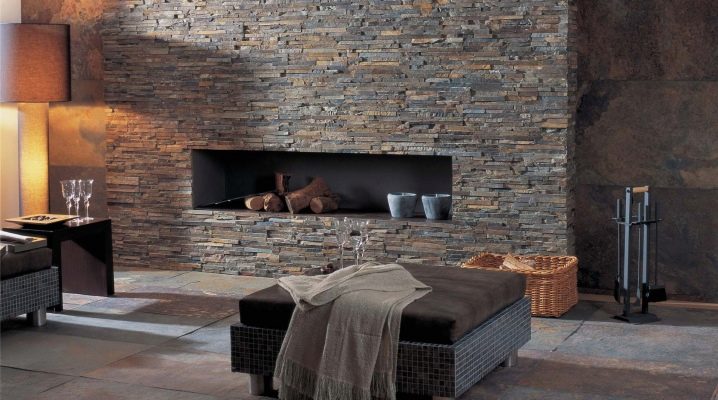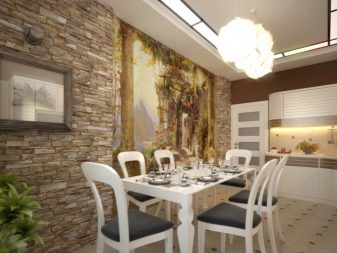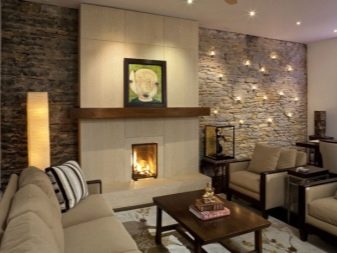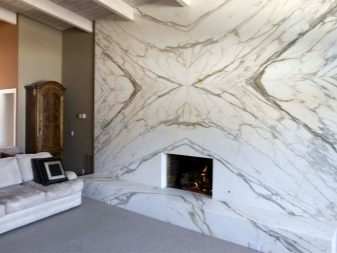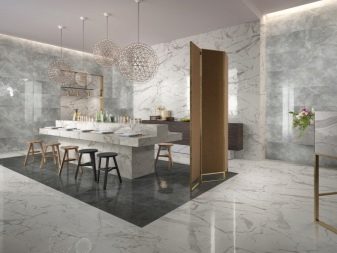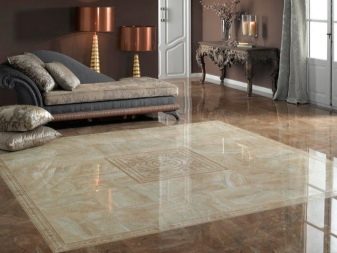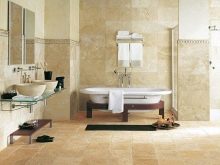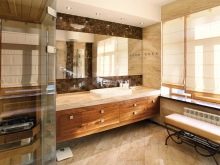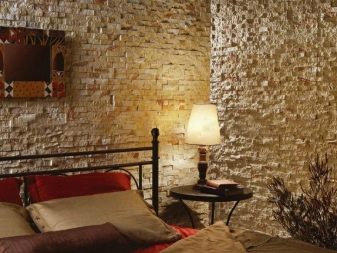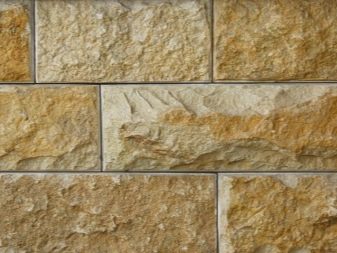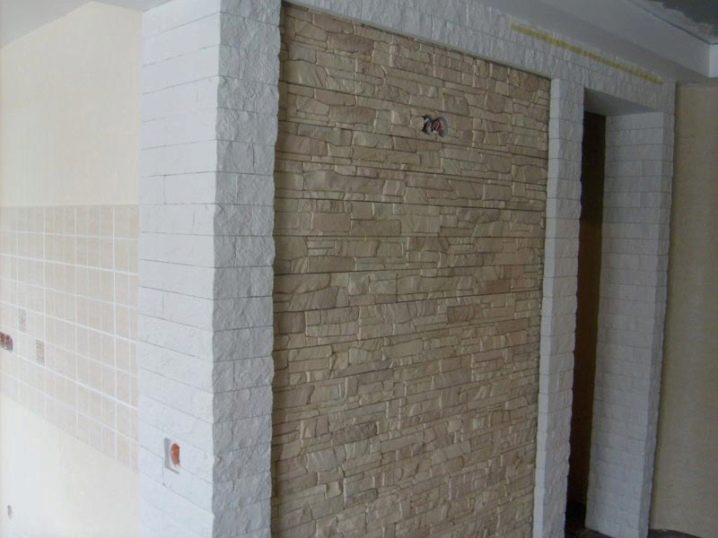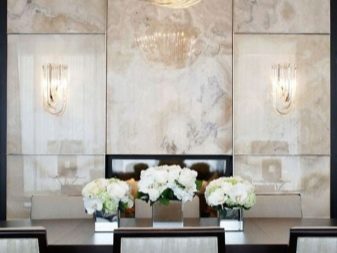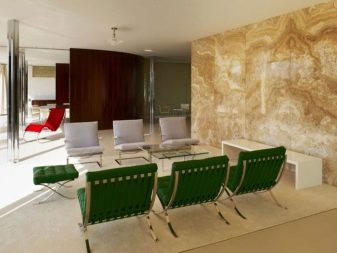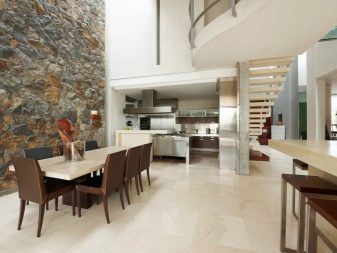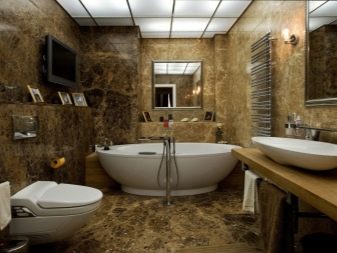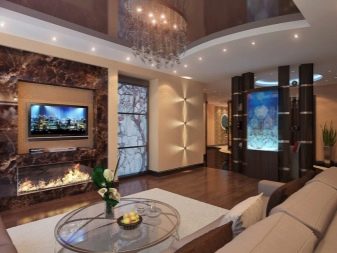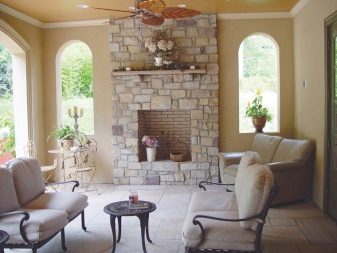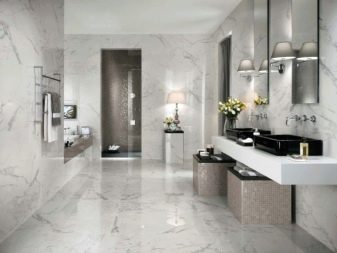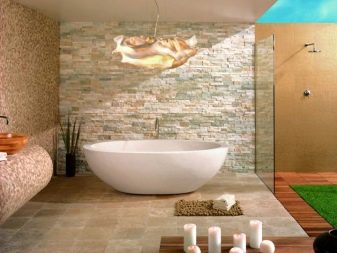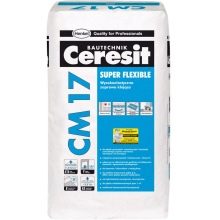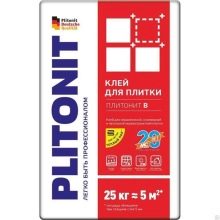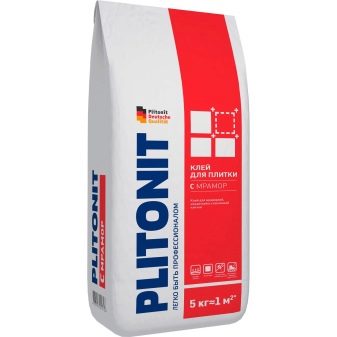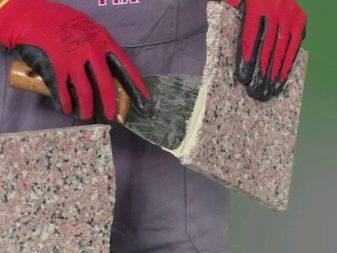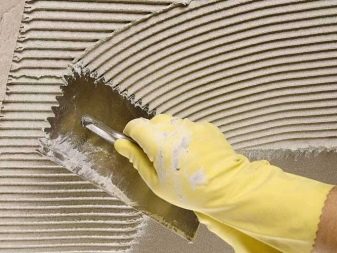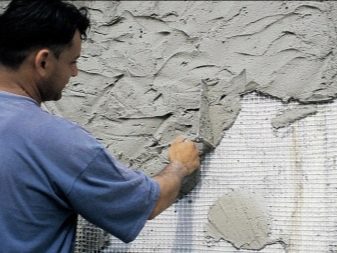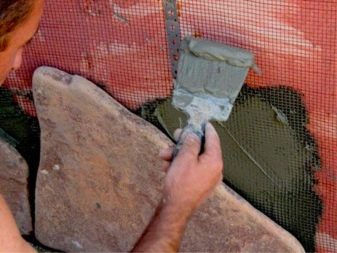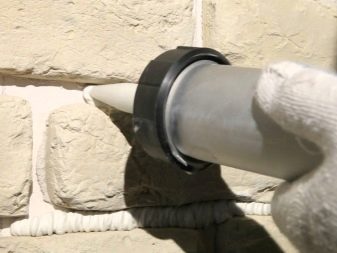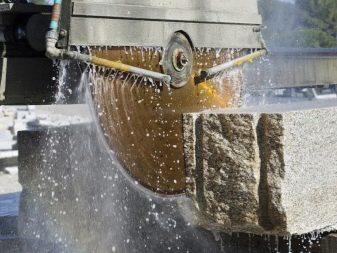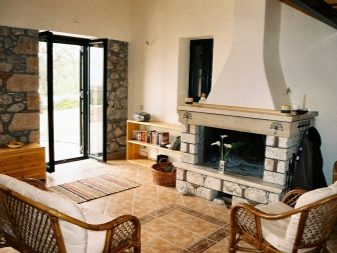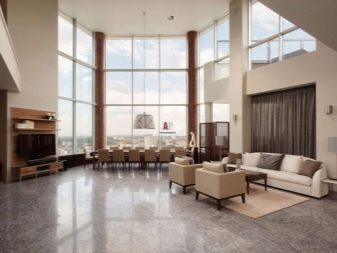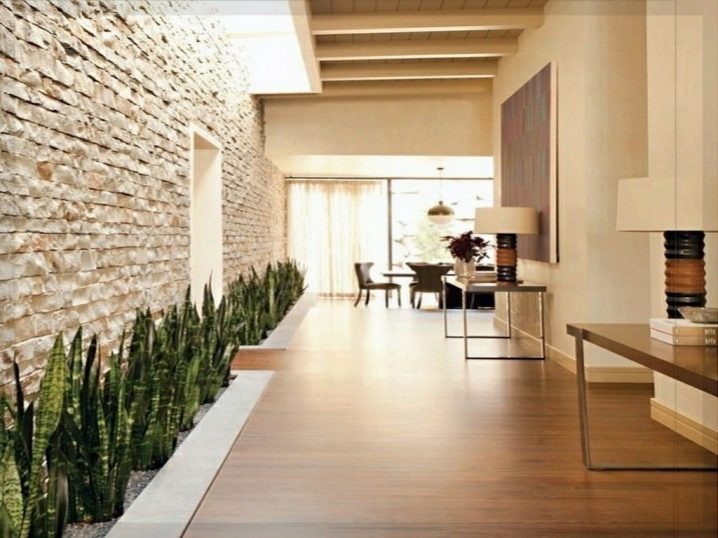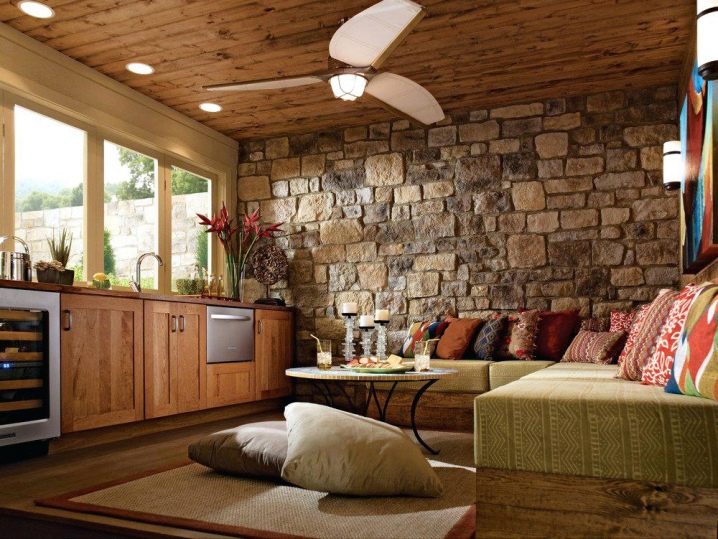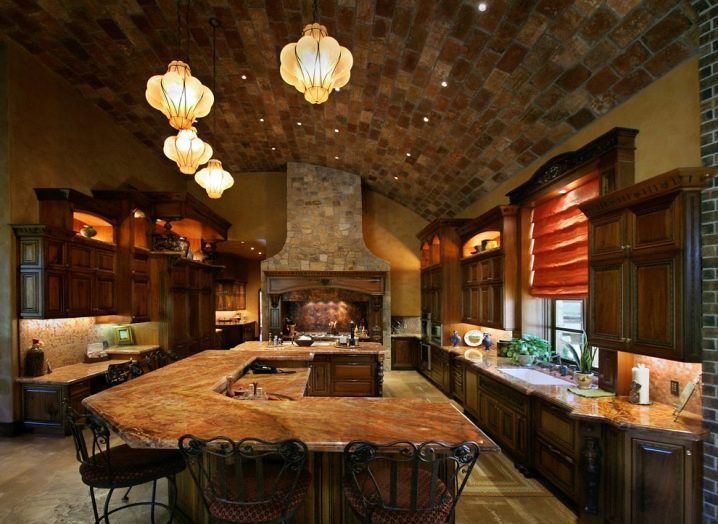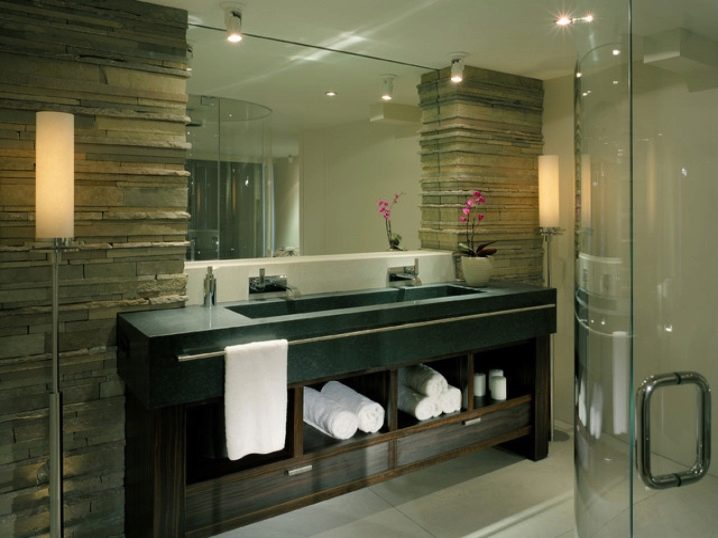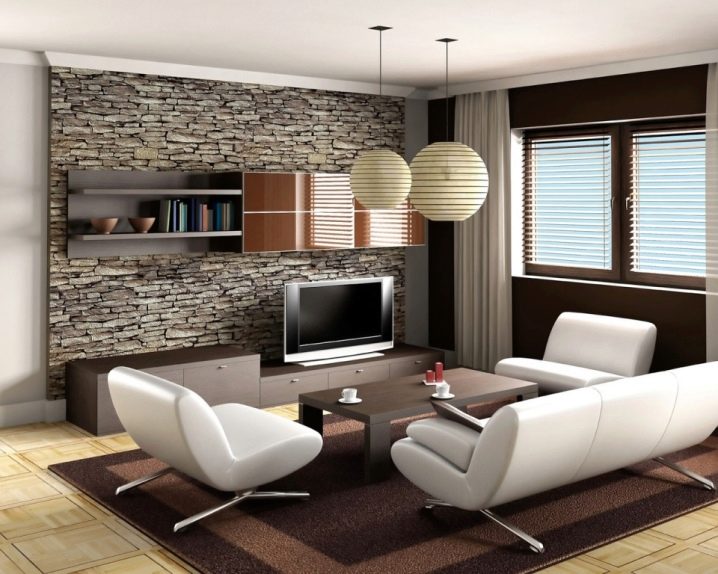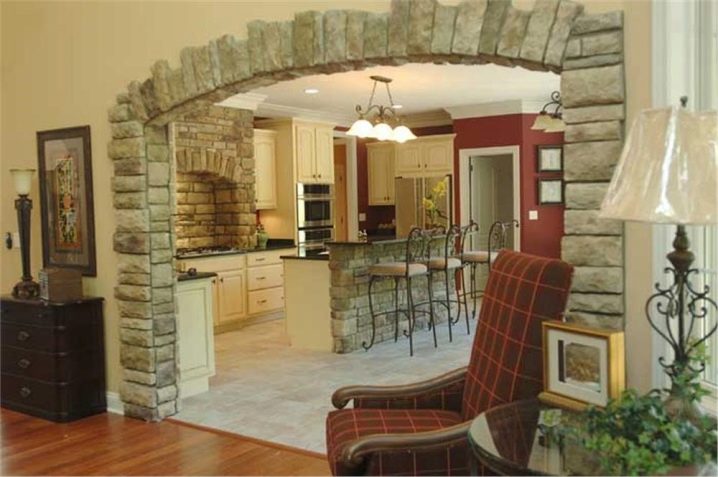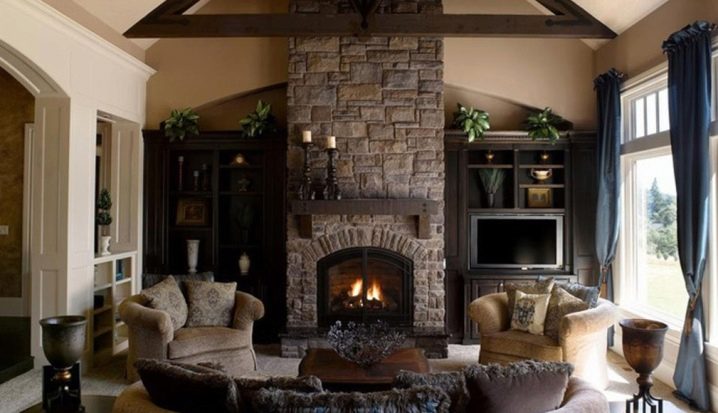The use of natural stone for interior decoration
Finishing with natural stone allows creating refined and respectable interiors. Undoubtedly, the material has several advantages, among which - durability, strength, moisture resistance, fire safety. Among the shortcomings - the high cost, high weight and complexity of processing.
Special features
The eminent inhabitants of ancient Rome resorted to the decoration of the internal parts of the house with stone. Due to the high cost of the material and the laboriousness of its processing and installation, such lining was available only to wealthy people, nobles. Over time, the popularity of the stone grew. And even with the advent of many other (less expensive and difficult to install) materials, natural stone for interior decoration remains in demand.
This is due to the high performance characteristics of products and their attractive, respectable appearance. Like thousands of years ago, a natural stone in decoration demonstrates wealth, the status of the owner of a house or other premises.
For interior decoration is selected durable and durable stone resistant to abrasion and mechanical stress. Preferred moisture-resistant stones that do not have radiation.
Due to the natural composition of the material is resistant to fire (is non-flammable), is weather resistant. Naturally, before using the stones are processed, the elimination of background radiation, sawing. The finished product must comply with the requirements of GOST 9480-2012.
Kinds
Different types of natural stone are used for interior decoration:
Marble
Natural marble basically has calcite, supplemented with other minerals. Shade and strength indicators of marble depend on the features and volume of the latter.
The material has a characteristic appearance, and its surface has a grayish, beige, black, burgundy and many other shades.The peculiarity of the material is the presence of light streaks, forming a pattern. Due to the processing (polishing or grinding) it is possible to obtain various textures of the material.
In addition to the strength and durability peculiar to most natural stones, marble has a high moisture resistance. This makes it suitable for finishing bathrooms and other rooms characterized by high humidity.
Granite
Perhaps the most durable and durable of all natural stones. Due to its moisture resistance and abrasion resistance, granite has a long service life. This noble material has several color shades that "play" when the sun's rays hit the surface.
Among the shortcomings - increased radiation background, as well as a lot of weight. The latter feature requires the strengthening of granite only on solid foundations and the use of adhesive compositions with increased adhesion.
Travertine
This material is the result of precipitation from carbon dioxide sources of water. It is based on calcium carbonate. One of the main advantages of travertine is the absence of radiation background.In addition, it is strong and durable (used even in the construction of the Colosseum), resistant to abrasion, moisture resistant. According to its strength characteristics it takes place between granite and limestone.
The main color palette of stone - white, gray, light shades of brown.
All shades are warm, so when facing with travertine it is possible to create a homely warm and cozy atmosphere.
Travertine has an interesting property - over the years its strength characteristics increase, which also contributes to the durability of the material.
Dolomite
Refers to carbonate class minerals. The brown, white or yellowish tinge of dolomite is due to the presence of clay and iron hydroxides in the particles. The peculiarity of dolomite is its brilliant surface, which can have a different degree of manifestation - from matte to pearl.
Dolomite also has no radiation background, moreover, has healing properties. It has a positive effect on the central nervous system, relieves nervous tension, relieves anxiety and insomnia.
The beneficial effect of the material, as well as its resistance to elevated temperatures, allows the use of dolomite in the decoration of rooms for rest in baths and saunas.
Sawn stone resembles tiled material.Such plates are convenient to glue, they do not require as high-quality reinforcement of surfaces as granite.
Slate
According to the professionals, slate is one of the best materials for interior decoration. In addition to the absence of radiation and an attractive design, the mineral has good thermal conductivity, and can also function as a soundproof material.
The shades of slate are gray, graphite, black, greenish, and burgundy. Its surface is covered with streaks, which form an intricate pattern. Depending on the treatment, the surface may be smooth or have a pleasant roughness, even a velvety. Slate has a certain feature - it periodically peels off. After the particles disappear, the material acquires the former appearance and at the same time becomes more durable.
Onyx
A variety of semi-precious stone with high light transmission ability. This leads to the presence of a radiant gloss of the surface of the material and its elegant appearance.
Facing with wild onyx is not a cheap pleasure, it is usually used in combination with other stones.
The material is characterized by environmental friendliness, has the ability to clean the air in the room. Among other advantages - ease and diverse processing options, durability, original appearance.
Specifications
As already mentioned, the facing stone is one of the most difficult materials for interior decoration. This provides, on the one hand, its increased strength and durability, on the other - complicates the installation process. Trimmed surfaces must be reliable and withstand significant loads.
The natural stone differs in fire resistance, the majority of its types are moisture-resistant. They do not absorb water, are resistant to aggressive liquids (except for travertine).
Natural stone allows to increase the heat and sound insulation of the room. In contrast to modern heaters, the finishing with natural material allows maintaining the optimum humidity in the room while reducing room heat loss.
The stone is resistant to high and low temperatures (not all materials withstand their abrupt change), ultraviolet rays.
Facing natural stone always looks aristocratic, elegant, respectable, allows you to emphasize the status of the interior. Given the high performance characteristics, it is logical that the cost of natural stone can not be low.
There are both quite expensive (granite, marble, basalt), and more affordable materials, such as shell rock, slate.
How to choose?
When choosing a certain type of stone for decoration indoors, you should first of all consider its purpose. So, polished granite organically looks when you decorate the walls of the living room, kitchen or dining room aprons. However, it is impossible to lay such tiles on the floor in the bathroom or in the shower room - it is too slippery, and there is a high probability of injury. For these purposes it is better to use porous marble tiles.. It is not only safe, but also has the ability to absorb and quickly evaporate moisture.
By the way, the latter feature and the presence of pores in it make it possible to successfully use marble in rooms with high humidity. The material will take away excess moisture, thereby creating a favorable microclimate in the room, and, if necessary, give it back.
However, if we are talking about flooring in the living room or corridor, the marble is no longer a suitable option. due to its low resistance to abrasion. In addition, it is chemically unstable, so when used in the working area of the kitchen (finishing aprons headset) will quickly lose its appeal.
When choosing a material, you should make sure that the elements have a smooth surface without cracks, build-ups, or streaks. Such manifestations are not only unattractive from an aesthetic point of view, but also degrade the adhesion of the stone.
It is important to pay attention to the size and design elements. In a small apartment large stones look ridiculous and cumbersome. As, however, and small stones in the space of a large area - they just get lost in it.
Glue mixes and solutions
Cement mortar or tile glue is used as an adhesive for natural stone. The latter is preferable because of the simplicity of preparation, elasticity, and the absence of efflorescence on the surface of the stone.
Among the leading manufacturers of tile adhesives are Plitonit (Plitonit B + adhesive has proven itself well), Ceresit (Ceresit CM17, Ceresit CM11, Ceresit CM117), Unix (Unix 2000 and Unix Granit) are suitable for stone.For heavy stone, professionals advise using Quick-mix FX-900.
In order to save money, you should not choose a product of an unknown manufacturer, because the final result of the lining depends on the quality of the adhesive.
Some formulations are universal, that is suitable for outdoor and indoor use. They have frost resistance, weather resistance. However, these characteristics are not important for the adhesive composition for the inner lining, respectively, it makes no sense to overpay for them.
It is much more rational to look for glue for interior work. For example, the famous Litokol compound is a universal glue. It will provide high-quality fixation, but it is more practical to buy Plitonit - an analogue for internal use.
For laying stone of light shades, first of all marble, you need to use only white glue (Plitonit Marble, Litokol Litoplus K55, Ceresit CM 115). The use of dark glue or cement can cause stains and streaks on the front surface of the material.
The adhesive composition or cement mortar varies in moisture content. Each type of stone requires a specific glue composition. So, slightly porous rocks (granite) absorb moisture the least, so any types of glue and cement mortars are suitable for their attachment.
Medium-porous materials - granite, sandstone - are characterized by greater absorbency, so the glue for them should have less water in the composition. Porous stones (marble, white granite) are considered the most whimsicalthat actively absorb water. It is clear that in the adhesive composition, it must be replaced with a special solution.
Cladding technology
Installation of a natural stone with your own hands should begin with the preparation of the wall. It is necessary to achieve its smoothness and evenness. However, minor irregularities due to the peculiarities of the finish will be invisible.
The next step is to coat the surface with a primer of deep penetration of 2-3 layers. It will perform the function of an antiseptic and increase the adhesion of materials.
After that, 2-3 layers of plaster are applied, after which a reinforcing mesh is fixed, and on top of it there are another 1-2 layers of plaster. This technology allows you to strengthen the wall. Laying stone in high humidity areas requires the organization of a waterproofing system.
Experts recommend first to lay out the finishing stones on the floor, achieving the optimal combination of pattern, shades, sizes of elements.After that, the last are numbered on the reverse side.
Fixation of the stone is made by one of the methods: end-to-end or with preservation of the seam between the elements. The adhesive solution is applied to the reverse surface of the stone with a spatula or comb. After that, the stone is pressed against the surface to be trimmed and slightly scrolled. You must wait a few seconds for the initial setting of the material. Laying the stone can be on the cement mortar, but it is better to use a special glue.
It is important that the glue is suitable for the selected type of minerals.. It is important to read the description and instructions for the composition and strictly follow them when diluting the adhesive mixture..
If heavy stones of large size are used, they are mounted on a metal grid attached to the wall. The mount is carried out using anchors. Holes of suitable diameter are made under fasteners in stones. The gap formed between the cladding and the mesh is filled with mortar, thereby achieving strength and reliability of fixation. The advantage of this method is that it allows you to hide minor defects of the surfaces of the walls.
Installation is from the bottom up, rows are stacked with a slight offset (as in the case of brickwork) to achieve the most natural effect. If the technique of laying with a seam is chosen, then tiled crosses are installed between the elements. or drywall strips. With their help, you can create the same width of the seams.
After the adhesive has dried, you can start grouting. The special composition should not completely fill the seam, the elements should seem to rise above the seams.
It is not easy to cut natural stone at home, so you should think over the layout of the elements in advance in order to avoid or minimize the need to cut the material. For cutting applied tile cutter or specialized professional equipment.
How to carry out laying of a natural stone, look in the following video.
The best options
Designers warn that when a stone is finished, the room may become less visually. To avoid this, allow proper lighting of the stone. In smaller rooms, it is better to abandon facing the entire surface of the wall with stone, and use it to single out individual sections, alternating with light textures.
The decorative effect is achieved with proper selection of the dimensions and color of the stones. For larger rooms, it is better to choose a larger stone. The spacious living rooms look elegant and respectable granite or marble.
Natural stones can look cold, so they are best combined with warmer textures - wood, plaster, dense textiles, fur. In this example, the fireplace, lined with white stone, is successfully combined with wood panels on the walls.
Bright warm shades of orange, red, yellow, green allow to “dilute” the excessive severity created by the natural stone of a light shade.
To emphasize the texture of the stone allows the technology of laying with a seam between the elements, while the seams are given a contrasting shade. Another option is to use stones of different sizes.
A bold version of the facing will be a stone ceiling. So it will be possible to recreate the atmosphere of chamber, comfort. After completing such a design of the ceiling in the attic or in the kitchen, for example, and adding it with appropriate furniture and even photo wallpaper, you can turn it into an alpine chalet.
An erroneous opinion is that the stone harmoniously looks only in classic and “rustic” interiors. Having correctly selected the material, it can be “entered” even in modern styles of loft and high-tech. In this example, deliberately rough brown-gray masonry is combined with a granite sink top, modern furniture and glass surfaces.
Designers offer interesting options for the use of natural stone in the interior.
- Facing stone of one of the walls of the room in combination with the wallpaper of the same shade or contrast color. If we are talking about the living room, the stone surface can become a "background" for a fireplace or a TV.
- The decoration of arches, corners and separate sections of the stone with the stone looks not only original and elegant, but also allows you to protect the most vulnerable parts of the room from damage, as well as significantly reduce the cost of acquiring the stone, since they require less. It is possible to combine stone texture with wallpaper or plaster.
- Filling of niches or, on the contrary, stone trimming of protruding parts of the surface. In this way, you can select a bookshelf or a TV area.The use of spotlights will help to achieve a chamber atmosphere and emphasize the originality of the texture.
- Partial lining of the walls with a stone avoids solidity and bulkiness. With this design, the walls look easy and stylish.
- The use of stone for the decoration of the partition serves as an effective way of zoning, brings warmth and comfort to the spacious (and therefore cold) rooms. The important point is that the partition must have sufficient bearing capacity to support the weight of the stone.
- The heat resistance of the stone makes it a suitable material for finishing fireplaces and adjacent surfaces of walls and floors. Especially attractively similar option looks in country houses.
